It’s impossible to talk about wine in Spain without mentioning La Rioja.
A little bit like talking about food without mentioning Italy. Or great things in life without mentioning cheese. It’s such a central part of it.
With more than 600 wineries, 14,800 winegrowers, and the largest barrel park in the world, it’s safe to say that La Rioja offers delicious wine for every preference.
La Rioja got so much to offer, that it can be hard to know where to start.
Let’s take a look at what all this fame is about, and how you too can get the most out of this wine wonderland.
How La Rioja Became
Spain’s Leading Wine Region
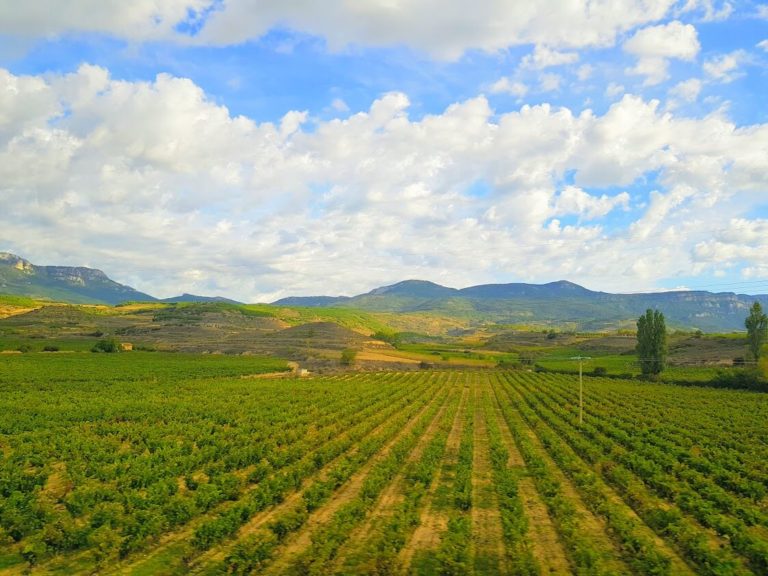
The La Rioja wine region has been around for more than 1200 years. It was first when French vineyards were destroyed by phylloxera, the region really started to expand.
The French winery owners found La Rioja in their search for a similar landscape. By teaming up with Spanish wine field owners, they together created what we today refer to as La Rioja.
What Makes La Rioja So Special
The culture and lifestyle are centered around wine in La Rioja. It’s something magical about it. While the wine plays the leading role, that’s not all.
The following are a few main attractions, covering wine and much more.
A Fine Wine Production Bigger Than An Olympics Pool
With 63,593 hectares of vineyards, La Rioja produces approximately 300 million litres of wine per year. That’s 20% more than a standard Olympic-size swimming pool.
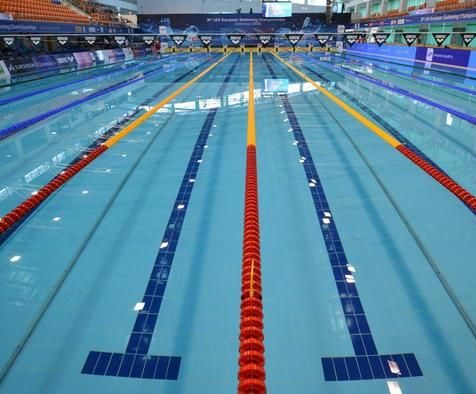
Just like the Olympics, wines from Rioja are recognized for their quality all over the world, and currently present in 130 countries.
An Incredible Quality To An Affordable Price
You can buy incredible wine at a very good price in La Rioja. Reservas can at times be on sale for less than £6 in the supermarkets. The price difference between a simple wine, and an option which is more complex and ageworty, isn’t that big.
Even if this is expected to change, Rioja’s relation between price and quality will still be hard to beat.
Wineries of All Types and Sizes Offering Bucket List Experiences
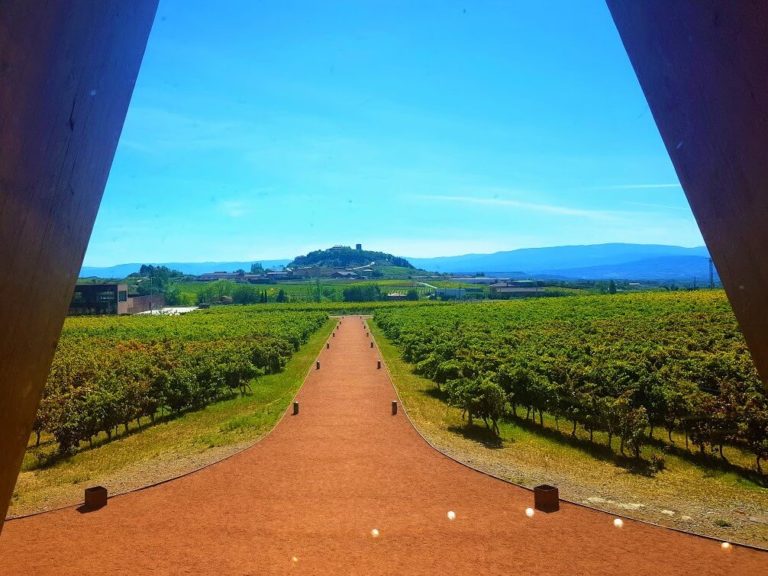
While the biggest wineries are the most well known outside of Spain, La Rioja mostly consists of smaller family-run wineries. Out of the 600 wineries in the region, over 100 (officially) offer visits. While some people describe La Rioja as industrial, I would say that it’s quite the opposite. You can have very personal experiences here, if you know where to go.
Mix smaller, charming family-run wineries with visits to some of the biggest wineries in Spain. Learning how they have managed to get to where they are today is also impressive.

Photo: winetourismspain.com.
Try dreamy experiences ranging from flying air balloon over the wine fields, to spa therapy, and 4D. Wine museums (including arguably the biggest in the world) blind tastings, wine tastings combined with astrology, large festivals, niche festivals, and smaller charming tours with the winemaker are other options. And I could go on.
Innovative Gastronomy With Local Ingredients
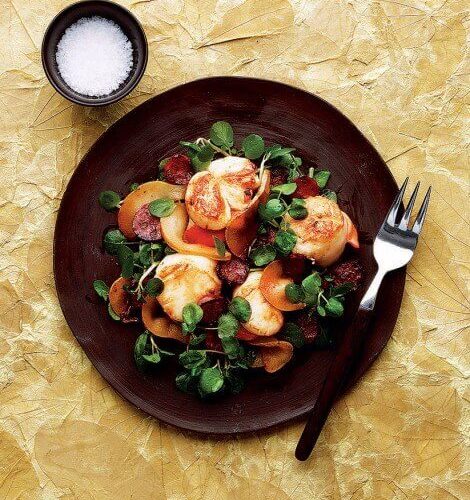
Photo: riojawine.com
Several of the wineries, as well as restaurants outside, offer gastronomy experiences that let you enjoy food matched with the perfect wine. Many have been around for generations. The majority work with local farmers and season-based menus, to always offer fresh, locally-produced cuisine.
The gastronomy takes you on a trip through history and culture, with influences from the Basque Country, Navarra and Castilla. From tapas, to tasting menus, and more elaborated dishes. Explore traditional and modern fusions. Your only worry will be how to have enough time to try all the good options. I can live with those kinds of problems.
A Mix Between City Life and Picturesque Villages
Discover cute mountain villages like Labastida or Laguardia, or stay in places like Logroño with more of a city vibe. Great wine will never be far away. The “city vibe” in Logroño is more like a mid-sized average city in Scandinavia, than New York, but still.
More details under “The villages of La Rioja” below.
Easy Accessible and Well-Connected to
Other Places Worth Visiting In Spain
It’s so easy to get to La Rioja, that there are no excuses not to. Many people do day tours from Bilbao, San Sebastian, and Pamplona. Most of the bigger cities in Spain are also just a short drive away. Zaragoza (1.5 -2 hrs), Madrid (3,5 hrs), and Barcelona (5-6 hrs).
Interesting History and Unique Architecture

The UNESCO World Heritage Suso and Yuso. Photo: spanishluxurytravel.com.
La Rioja has been occupied by pre-Roman Berones, Pellendones, Basques, and Muslims in the past. Even if we can’t travel back in time yet, you can explore its history and culture through its unique architecture. The Cathedral of Santo Domingo de la Calzada, the UNESCO World Heritage Suso and Yuso monasteries, are 2 places you will be remembering.
Natural Surroundings Perfect If You Feel Like
a Break From Drinking, or While Drinking

Sierra de Cebollera Nature Reserve and the Arnedillo Biosphere Reserve are good places to get started. Photo: Twitter.
If you’d like to take a short break from the wine tastings, or just enjoy wine with views, La Rioja won’t disappoint. Even if it’s the smallest region in Spain, its landscape is one of the most diverse. Mountains, seven rivers, Mediterranean forests, and countryside come together, creating postcard views you won’t get tired of.
Hiking opportunities are spread out across the region. Rioja is also great for bird watching, priding itself with a UNESCO Biosphere Reserve designation.
If you’re looking for adrenaline, choose from climbing, paragliding, mountain biking, canyoning, and more. You can also stay in a lovely guest house that lets you end your night with a sky full of stars. Wake up surrounded by nothing but natural beauty.
The Villages of La Rioja
There are so many cute villages in La Rioja. You would have to stay for months to get to know them all. In the decision of where to stay, it comes down to what kind of ambiance you prefer.
I recommend that you base yourself in different villages, with a couple of days in each. You could combine this with 1-2 nights in Logroño. With a car, the distances aren’t big.
Many family-run wineries are based in smaller towns. They often have lovely historical centers, and a more local vibe, which will give you a real authentic experience. Whatever you decide, you need to visit different villages, since the best wineries are spread out.
Logroño: The Biggest City Of La Rioja
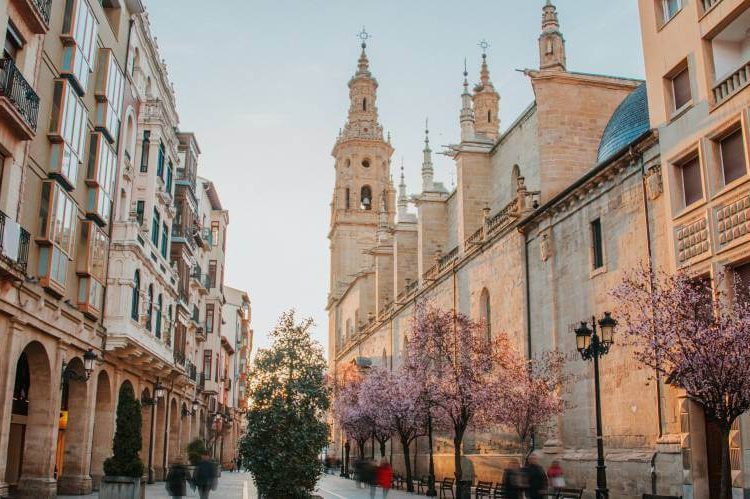
With a population of 150.000, Logroño is the biggest city in the area. Photo: El Pais.
Logroño is La Rioja’s capital. The main attraction in the city itself is Calle del Laurel, a street full of tapas bars. Some good ones to get you started are Blanco y Negro, La Fontana, Taberna de Volapie, and Pasión por Ti. Each one has their specialty, just ask the people working in the bar for recommendations.
You’re walking distance to good bodegas, like Franco Españolas (more about Franco Españolas under Wineries to Visit In Logroño below). Accommodation-wise, you can choose between everything from smaller bed and breakfast, to apartments, and luxury hotels.
If you feel like going out, Logroño offers lots of bars and nightlife. Throughout the year, festivals like Rioja Wine Harvest Festival, known traditionally as the festivities of San Mateo, take place. In between the visits to the wineries, keep yourself busy by eating, visiting museums or just stroll around the Old Town, taking pictures of historic bridges and churches.
Where To Stay In Logroño: Pensión El Espolón:
Charming Pension A Few Blocks From Calle del Laurel
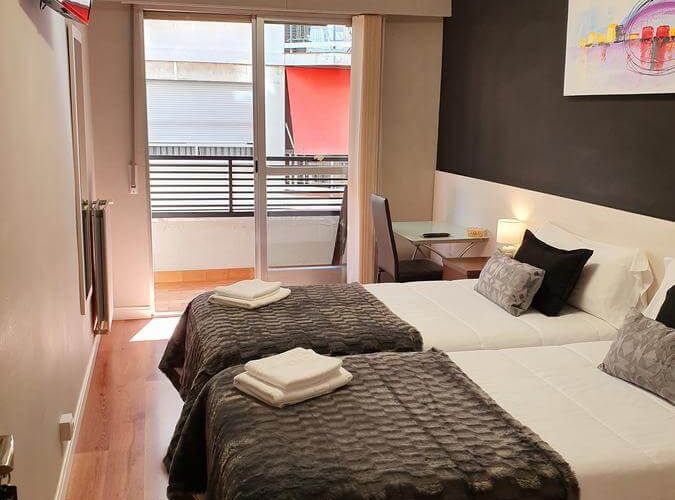
Room types range from single, to double and triple.
Pensión El Espolón is located a few minutes walk from San Juan – and Laurel Street, right by the historic center in Logroño. Clean, comfortable and relaxing. Managed by Sandra, a lovely brasilera, who currently runs 2 pensions in Logroño.
Sandra came here years ago, and has worked her way up to be able to manage her own little empire. She is available for whatever you may need, and knows how to work the details to make you feel at home.
The pension is newly renovated, with everything such as bars, shops, and resturants, outside of the door. A total of 5 rooms, of which one has its own bathroom. A homely place to spend a few nights while exploring the area.
Learn More (Reviews, Photos, and Reservation)
Haro: “The Capital of Rioja Wine”
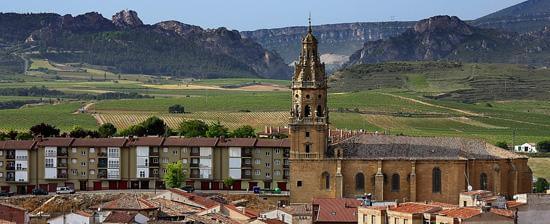
Haro views. Photo: spain.info
Haro, or the capital of Rioja wine, as the locals call it, is a smaller town with a more industrial vibe. Many of the best wineries in La Rioja are based here. Apart from wineries, you have a nice selection of bars, restaurants and hotels. Haro is also the home of the world’s biggest wine fight, La Batalla del Vino, which takes place in June every year.
Laguardia: Mountain Village With Everything You May Wish For
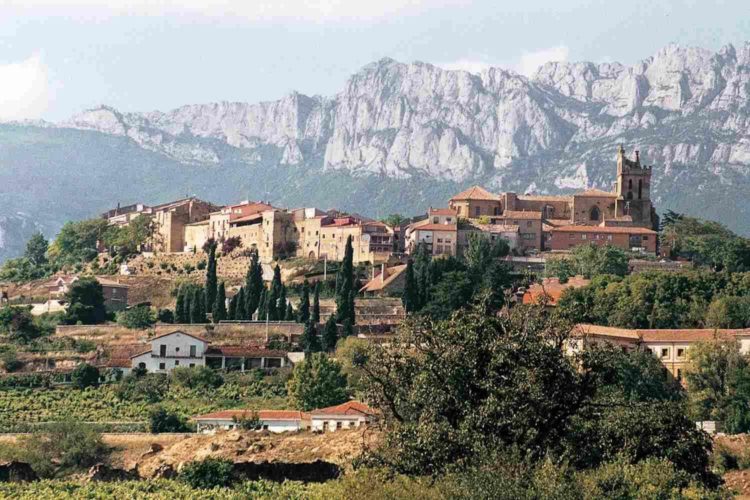
Wow is what people usually say. Photo: Winetourismspain.com.
Located in the Basque side of Rioja wine region, Rioja Alavesa. Laguardia is a gorgeous, small town with lots of charm and a medieval wall from the Xth century.
It’s peaceful, and surrounded by great wineries. I stayed here for 3 nights and loved it. Apart from waking up surrounded by natural vistas, there are lots of great restaurants, bars, accommodation options, and unique experiences. It’s a perfect place to enjoy life, drink amazing wine, sleep well and explore what the region has to offer.
Where To Stay In Laguardia: Alojamiento Santa
Engracia Laguardia: 150 kvm Apartment Right In The City
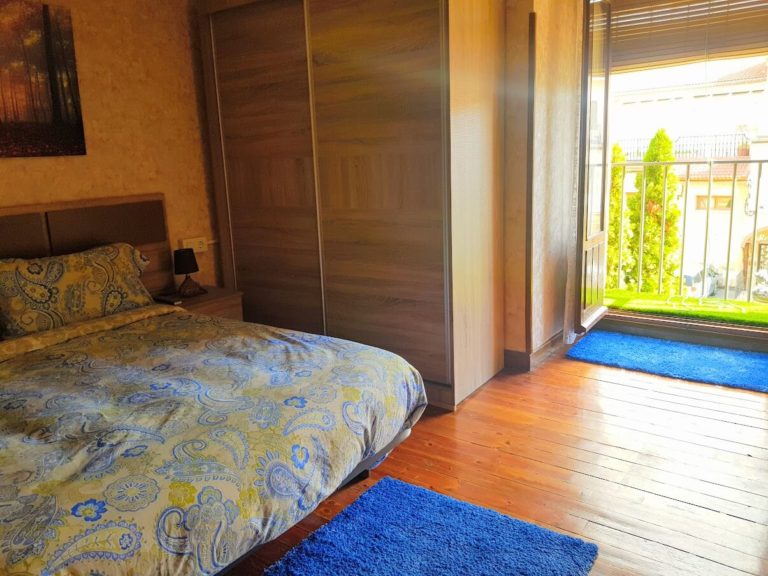
The main bedroom.
I’m staying in a 150 km2 apartment in Laguardia managed by Eduardo. The location is perfect. Right on one of the main streets. You have cafes, restaurants, bars, the bus station, and even the Fabulista winery just outside of the door.
While Eduardo and his family have owned the apartment for years, they just started renting it out 1.5 years ago. If you’re looking for a traditional, comfortable apartment where you’ll feel like a local for a few days, this is a real catch. You won’t find a better value vs. price in Laguardia. People who are from the area don’t even know that it exists – yet.
You’ve got a fully equipped kitchen, a French balcony, a bathroom with a bathtub, and in general lots of space. While you have all the privacy in the world, Eduardo is always easily available for anything you may need. It easily fits 7 people, and is perfect for couples and groups.
You will be happy here.
Learn More (Reviews, Photos, and Reservation)
Labastida: Gorgeous Views, Less Touristy
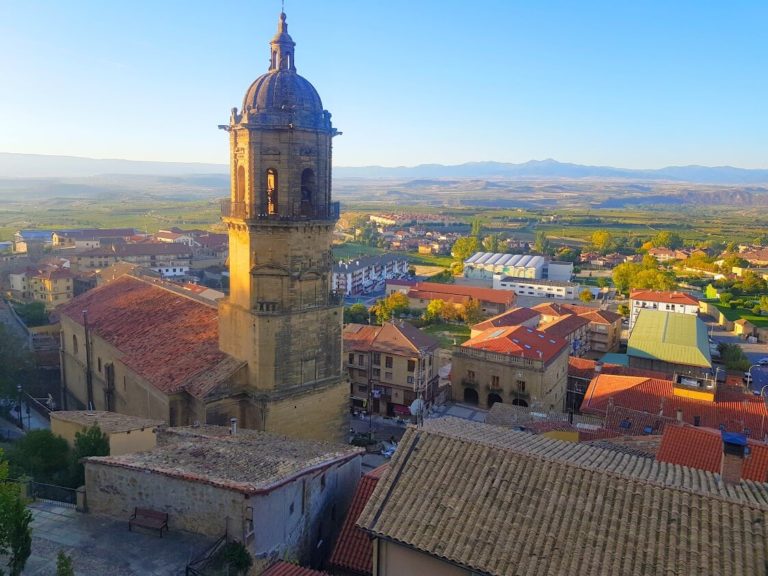
Not a bad place to start the day.
Labastida has the charm and beauty of Laguardia, but is less exploited. Explore its unique history and architecture, including several houses with Coats of Arms. It’s located right in the middle of La Rioja, and will spoil you with some gorgeous viewing points, cute restaurants, wineries, and bars. Whether you decide to stay here or not, it’s definitely worth a visit.
Other Cute Villages In La Rioja Worth Discovering

Elciego presents many exciting wineries. Photo: Agoda.
Elciego, Samaniego, Abalos, Lapuebla, Villabuena, are other charming towns worth checking out in La Rioja. They are less touristy, but still offer great gastronomy and accommodation options – ranging from simple to luxury.
The Wine And Grapes In La Rioja
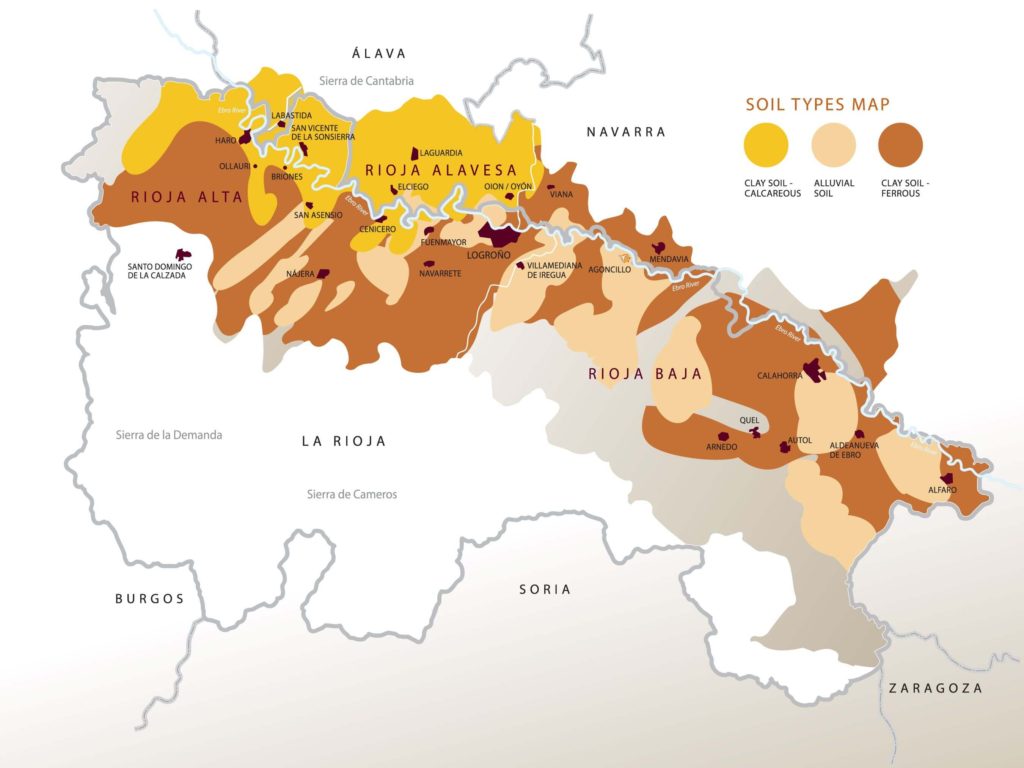
Photo: Pinterest.
Like Champagne and Utiel-Requena, only wines grown and produced within Rioja and approved by the control board (Denominación de Origen Calificada) can be labeled La Rioja.
Rioja’s 3 sub-areas, Rioja Alta, Rioja Alavesa and Rioja Baja/Rioja Oriental, have different soil types, which makes it possible to produce unique and exciting wines full of personality.
The grape varieties authorized in the DOCa Rioja for red wines are: Tempranillo (for which Rioja is most famous), Garnacha tinta, Graciano, Mazuelo and Maturana tinta. For white wines; Viura, Malvasía, Garnacha Blanca, Tempranillo Blanco, Maturana Blanca, Turruntés, Chardonnay, Sauvignon Blanc, Verdejo.
What The Age Classification Really Is About
The system in Spain can be confusing at first, but you’ll quickly get used to it. These main terms tell you how the wine has been aged in oak barrels. It’s more about quality, than the style of wine.
In 2018, Rioja Consejo Regulador officially updated the classification system, which was a very big deal. Here’s how it works.
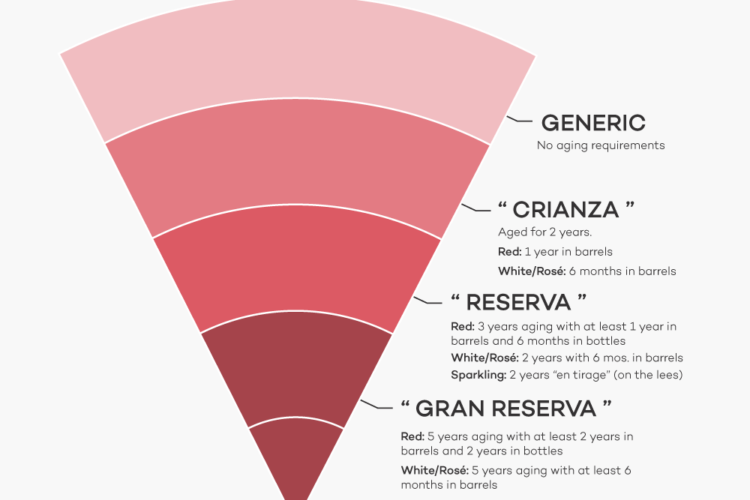
- Joven: Wines in their 1st or 2nd year. Fresh and fruity, meant to be consumed in the near future.
- Crianza: Aged for at least 1 year, with a minimum of a few months in barrel. White wines must be aged at least 6 months in barrels.
- Reserva: Aged for at least 3 years, with a minimum of 1 year in barrel. Wine makers often age them longer. White wines must be aged at least 2 years, with a minimum of 6 months in barrels.
- Gran Reserva: Selected wines from the finest grapes. At least 2 years in oak barrels and 3 years in bottle. White wines need at least one year in barrels, with a minimum aging period is 4 years. Aged for as long as needed, several of the wineries I meet store bottles for decades.
- Gran Añada Rioja: Sparkling: Wines must be aged “en tirage” for at least 36 months. Vintage-dated espumosos must be harvested by hand.
How La Rioja Is Changing
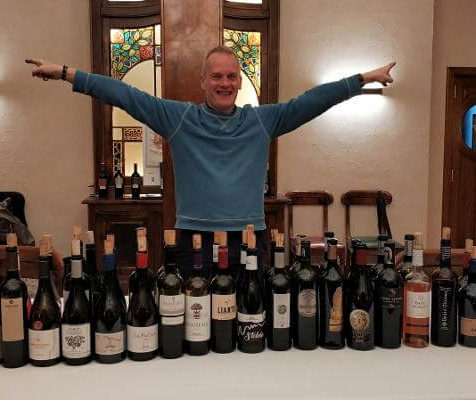
Tim Atkin enjoying the best of what Rioja has to offer in 2019. Photo: lomejordelvinoderioja.com.
Many changes are in progress in La Rioja. In addition to that people are questioning the regulatory body’s rules, a new generation of Rioja producers are starting their own bodegas.
Lately, the production of rosados and white has increased, and many wine experts think these are among the most interesting Riojas to drink. Wines different from the traditional Riojas is a growing category, which is receiving great ratings. Red still represent 85% of the production.
La Rioja’s New Global Identity
In 2017, Rioja approved new indications including Vinos de Zona (Rioja Alavesa, Rioja Alta, Rioja Baja), Vinos de Municipio (towns, villages, or municipalities), Viñedos Singulares, Espumosos de Calidad de Rioja (sparkling wines), and new ageing requirements for Reserva and Gran Reserva wines, and permitted the production of single varietal white wines.
In 2018, a new global brand identity was launched in London under the title “The new face of Rioja”. It has a bigger focus on the origin of the wines, a trend which is expected to continue. If producers will be allowed to use the names of individual vineyards on their labels, the finest terroir-focussed Riojas will likely attract even more investors and wine collectors.
Wineries To Visit In La Rioja

Wineries To Visit In Logroño
Viña Ljalba: The First
Ecological Bodega In La Rioja
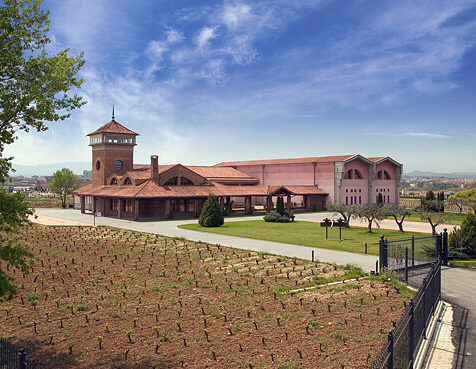
Since its foundation in 1991, Viña Ljalba has been all about quality ecological wines, elaborated using traditional methods. Run by the 3rd generation of the family Ruiz, the core values continue as strong.
The name represents respect for the environment and continuous innovation based on research. Pedro, their winemaker, takes me around the winery and tells me how they from the beginning have focused on recuperating minority native varieties of Rioja. As the pioneers with this approach. it has been “challenging and exciting”.
Viña Ljalba produces about 0,5 million liters per year. They operate with vineyards on poor soils, limited production, and ecological techniques. The objective is always to get the most out of the land, resulting in unique and individual wines of the highest quality. About 70% of their wines are sold outside of Spain, with the UK, Belgium and Canada as 3 of the central markets.
The wines of Ljalba
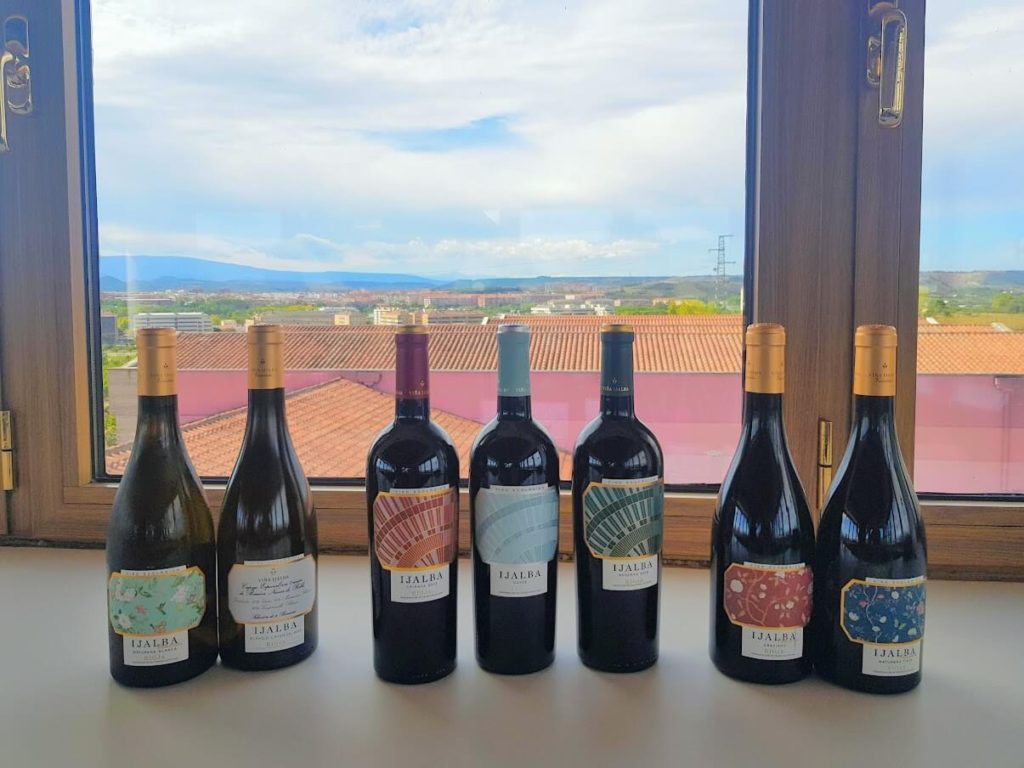
We end in the Panoramic Tower of the bodega to try the wines accompanied by cheese and jamon from the area.
The Crianza is classy, fruity, and easy to drink. With aromas of toast and vanilla, and a round taste with body, it’s a great representation of the winery. The Cuvée is flavorful and spicy. elaborated with a careful selection of grapes of Tempranillo, Graciano, and Maturana Tinta. Mild tannins with hints of ripe fruit and spices, with roasted aromas. The Reserva is smooth, well-balanced, with hints of toast, dark chocolate, and herbs. The Maturana Tina is different from the classic wines from La Rioja. Intense, with hints of black fruit.
The first 100% ecological Graciano in the world is more complex, with aromas of black berries, cherry, and liquorice. It would be perfect with meat, grilled tuna, or stronger cheese. The Maturana Blanca is elegant, fresh, and persistent with aromas of tropical fruit.
Experience Llalba
Llalba offers many different experiences, which can be customized based on your preferences. From traditional tastings, to bike wine tasting tours, company meetups, and special events during harvesting time.
Learn more and book your experience
Bodegas Franco Españolas de
Logroño: Pioneer of Semi-Dulce Wines
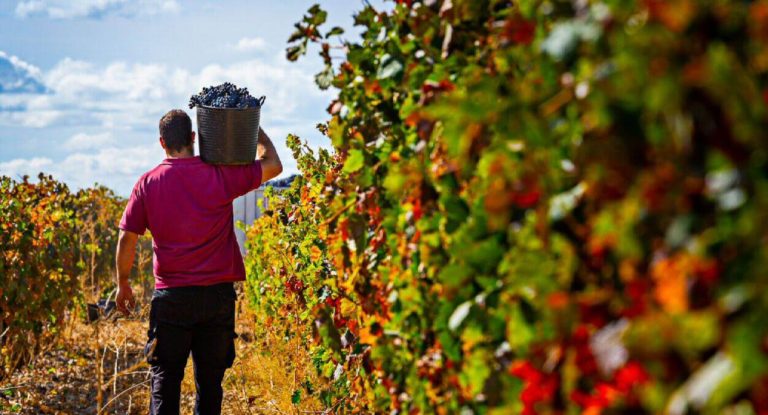
Photo: Franco-Españolas.
Bodegas Franco-Españolas is one of the most well-known wineries in Logroño. Located within walking distance from the city center, it’s easy to visit. Founded in 1980 by French and Spanish winemakers, Franco-Españolas are focused on Fine Wines of Rioja.
Diego takes us around the facilities of the winery, which maintains its original architecture of 1890. Modern and high-tech, the storage room with 11 000 barrels, and their underground cellar are two of the highlights.
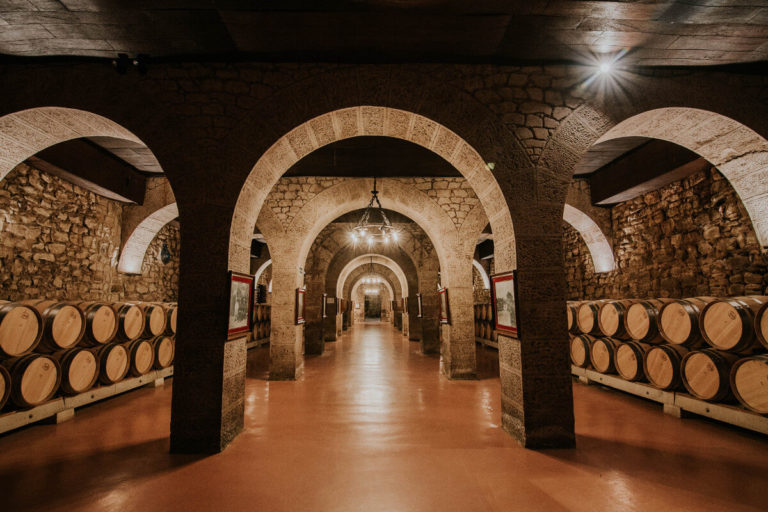
Elegance. Photo: Franco-Españolas
Bodegas Franco-Españolas produce about 4.5 million liters of wine per year, out of which 1 million is white wine. Diamante, their first wine, has helped to establish the brand globally. About 35 % of the total production is exported outside of Spain.
The winery is still family-run and continues to innovate with new wines, as well as innovative events. Known for VIP visitors, like King Alfonso XIII and Ernest Hemingway. They even claim that this is Hemingway’s favorite winery… I’ll leave the interpretation of that up to you.
The wines of Bodegas Franco-Españolas
Bodegas Franco-Españolas is known as the pioneer of semi-dulce wines in La Rioja. No visit is complete without trying the famous Diamante. I’m not usually a fan of sweet wines, but Diamante is not too sweet. It’s refreshing, and delicious.
The Rioja Grand Reserva Bordón, made from Tempranillo, Graciano and Mazuelo from vineyards in the 3 sub-areas in Rioja, is complex, fruity, and intense. Elegant with spicy notes, and a delicious aftertaste that stays with you.
Their RB seleccion is a limited edition made from Tempranillo from vineyards in the 3 sub-areas. Aged in American and French oak barrels for 12 months, it wins you over with aromas of red fruits and spices. It would be perfect with heavier food, like a creamy pasta, meat, or cheese.
Experience Bodegas Franco-Españolas

Bodegas Franco-Españolas offers daily tours of the winery with snacks, lunch, or a aperitif. You can also use their space for your special events. They are used to organizing everything from ceremonies, to congresses, concerts, exhibitions, cocktails, and banquets. For the past years, they’ve been the host of MUWI La Rioja Music Fest. It takes place in August, and attracts 11,000 people over 3 days with its unique combo of music and wine experiences.
Learn more and book your experience
Wineries To Visit In Haro
Muga: “If You Leave Rioja Without
It, It’s Like You Haven’t Been Here”
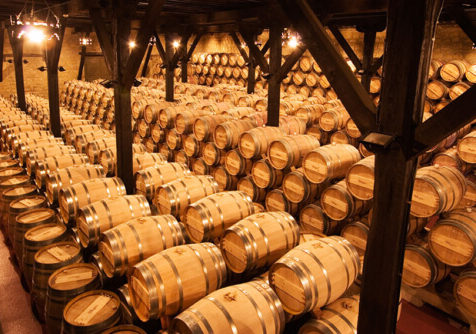
Photo: Muga.
Locals working at other bodegas, and within the hospitality industry in La Rioja, all tell me that I must visit Muga. “If you leave Rioja without it, it’s like you haven’t been here”.
Founded in 1932, Muga is unique for many reasons. The facilities, made of oak and steel, are 200 years old. Apart from being beautiful, with a long history, Muga is one of the few wineries still making its own barrels in the world. It’s the only cellar in Spain with a master cooper. Their Barrel maker Jesus, who we’re lucky to meet during our visit, has been working here for years.
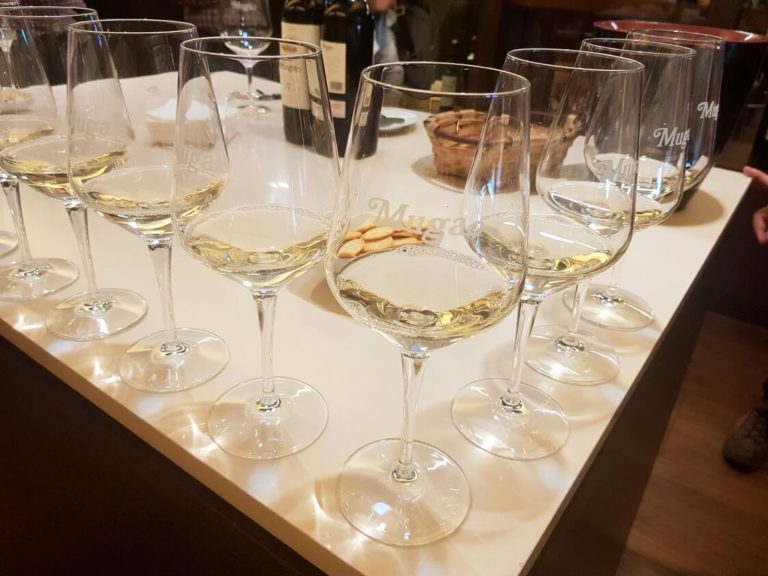
Photo: Muga
Roberto, the guide from the Marketing Department who also has studided Oenology, shows us around. After a few years in Bordeaux, he recently brought his skills back to Spain. The focus at Muga is on quality, achieved through the combination of premium materials and traditional methods. Always with an open mind towards new techniques that could improve the wines, without losing the authenticity.
Muga uses oak throughout the wine-making process. Every 4 months, they manually move the wine from its current barrel to new barrels. The barrels are cleaned using egg whites, according to traditional methods. 2-3 egg whites per 100 liters of red wine. The eggs are then transformed into high-quality compost, which they use to fertilize the soil.
Muga exports about 50% of their production to 70 countries, with the US as one of the key markets. Aro, which has received 99 points from Parker, is their most exclusive wine, priced 120 euros a bottle. The family’s wine cellar on-site has wines that go as far back as the 1970s. Unfortunately, we’re not trying them today.
The wines of Muga

80% of Muga’s production is red wines, but more white wines are being introduced. Their Rosado 2018 is elegant, fresh, and intense. Muga Reserva 2016, is well balanced, and even better together with the charcuterie we get served on the side. Easy to drink, with red fruits, vanilla, a hint of coffee, and smoked aromas.
The Muga Reserva Special Selection 2015 ends up becoming my favorite. It’is different from everything I’ve tasted before. Fruity aromas come together with notes of spices, coffee, and oak. Roberto says it will be even better next year – now that’s reason alone to come back.
Experience Muga
Muga offers many experiences, which can be customized for groups. From hot-air balloon rides, to private tours, segway with picnic, tasting courses, guided tours, and more. Their tours are always full, so you better book in advance. They have a lovely little bar and a shop on-site, where you also can enjoy tastings.
Learn more and book your experience
Bodegas La Rioja Alta: “One
of The Best Wineries In The World”
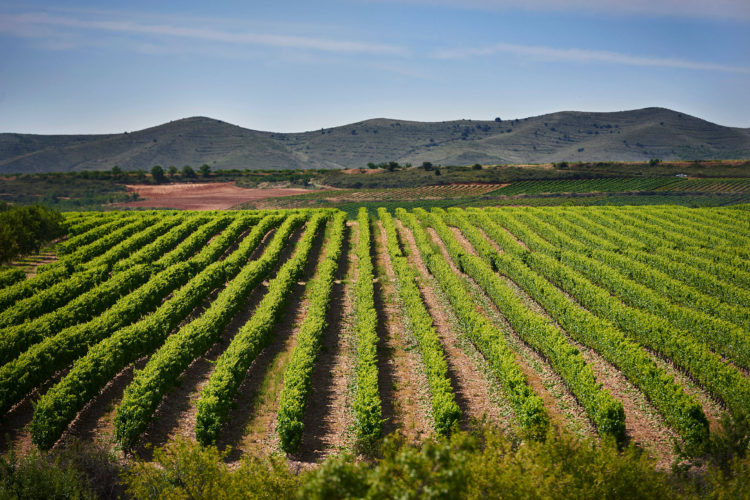
Most vineyards are located in Rioja Alta except for La Pedriza in Tudelilla (Rioja Baja). Photo: Rioja Alta.
La Rioja Alta, named one of the 100 best wineries in the world in 2019, represents quality, elegance, and innovation. Their first president was a woman, Doña Saturnina García Cid y Gárate, and they have been pioneers ever since. Eladio, the Director of Marketing, shows me around their 100-year-old facilities in Haro.
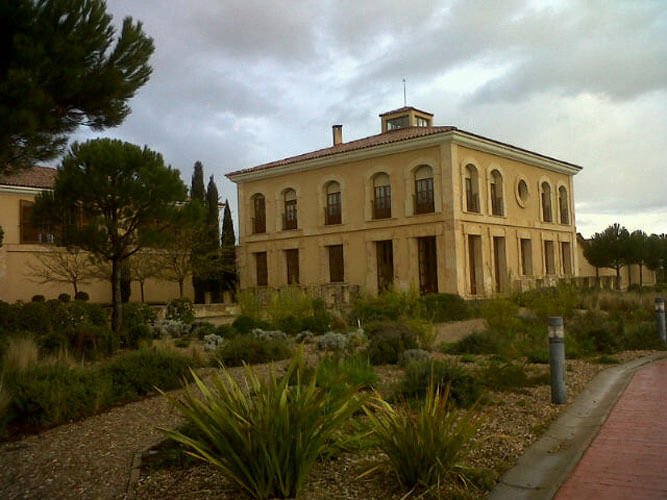
Founded in 1890 by 5 families, La Rioja Alta combine traditional methods with modern technology. They have their own cooperage, and operate with long ageing periods as the standard. Barrels are manufactured on-site, using wood from the US, and artisanal methods. Every 6 months, they manually rack every barrel under candlelight to enhance the wine.
If you’re lucky to join their exclusive members club, Club de Cosecheros, you get your own, customized, premium wine, that won’t be available on the market. Free tours of the winery, and VIP access to special rooms perfect for private get-togethers, are also a part of the experience.
In addition to the traditional winery in Haro, Rioja Alta has modern facilities in Labastida. The wineries Torre Oña in Laguardia and La Garde Cervera in Ribera del Duero are also a part of the group. With gorgeous facilities and wine that constantly are being recognized as best in class, Rioja Alta continue to strengthen their position as a role model in the industry.
The wines of La Rioja Alta
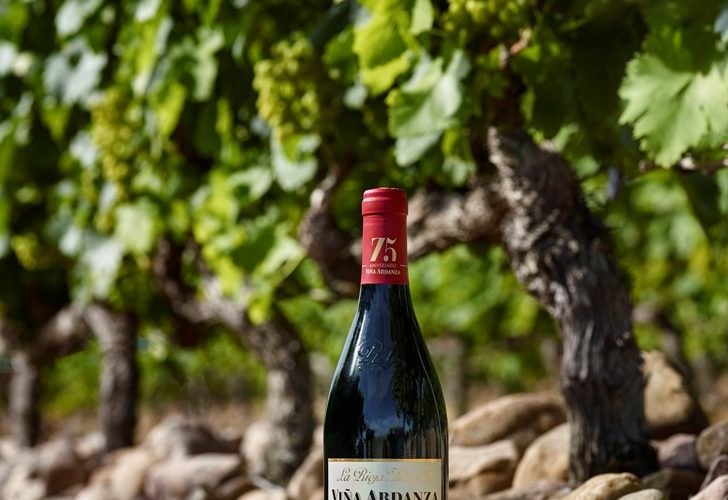
Photo: Rioja Alta.
I try the 2009 Viña Ardanza Reserva, one of the flagship wines from La Rioja Alta. It got a spicy character, with notes of sweet cherries, candy, pepper, coffee,and cinnamon. It’s well-balanced and complex. Power, elegance and a rustic touch come together into a delicious wine, easy to drink, with much personality.
The Gran Reserva 904 represents a Rioja classic. It’s intense and complex, with notes of blackberries, raspberries, plums and ripe grapes. Balanced with a spicy impression of cedar, toffee, vanilla, chocolate, and coffee. It’s elegant, with a long aftertaste.
Experience La Rioja Alta
Rioja Alta offers daily tours with tastings, which also can be combined with food in their restaurant. They have 3 private dining rooms with a capacity for up to 30 people where you can enjoy delicious traditional Riojan dishes prepared exclusively for you and your group.
Learn more and book your experience
Wineries To Visit In Laguardia
Eguren Ugarte: A Unique Escape
With Complete Wine Experiences
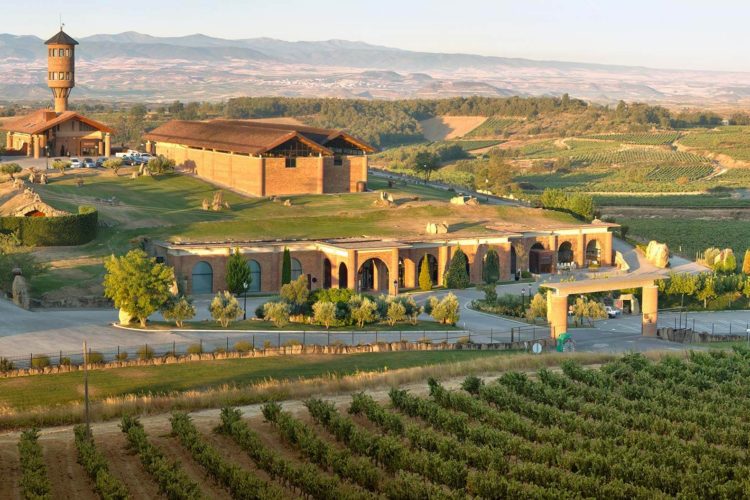
Photo: Eguren Ugarte:
Surrounded by 130 hectares of winefields, Eguren Ugarte is an extraordinary place. The founder Vitorino Eguren was special to say at least, in a good way, with very clear values. “To embrace the spirit of welcoming and looking after visitors, which had been typical of the Rioja Alavesa farmers for centuries”. His values and personality are very much present at the winery through the design, the decorations, and details such as quotes.
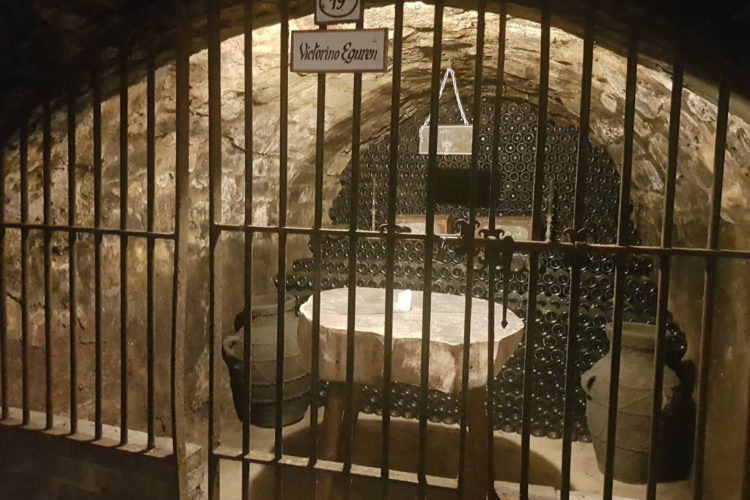 The winery features over 2 km of underground caverns. The niches that they offer is one thing that distinguish them. The niches are like private wine storage cellars, which they sell to higher-spending clients. You get access to their txokos (basque term for an informal meeting venue with family/friends) as a part of the package. It basically means that you can bring your group and enjoy your wine at one of the private spaces at the winery. Not a bad way to spend an afternoon.
The winery features over 2 km of underground caverns. The niches that they offer is one thing that distinguish them. The niches are like private wine storage cellars, which they sell to higher-spending clients. You get access to their txokos (basque term for an informal meeting venue with family/friends) as a part of the package. It basically means that you can bring your group and enjoy your wine at one of the private spaces at the winery. Not a bad way to spend an afternoon.
The property also presents other unique features on-site, such as a little chapel with capacity for up to 50 people. Two of the family members recently celebrated their 70 years anniversary as married by renewing their vows here.
The wines of Eguren Ugarte
Eguren Ugarte Focus on wine with a good relation between quality and price. 30 % of the production is white wine. Their line of products cater to different preferences with price ranging between 7.5 to 99+ euros, with Anastasia being their most exclusive bottle.
I try the Martin Cendoza, one of the most representative wines. Named after Vitorino’s brother’s wife, it’s elegant, with notes of ripe black fruit, blackberries and plums. Full-bodied, easy to drink, with a long and persistent aftertaste.
Experience Eguren Ugarte
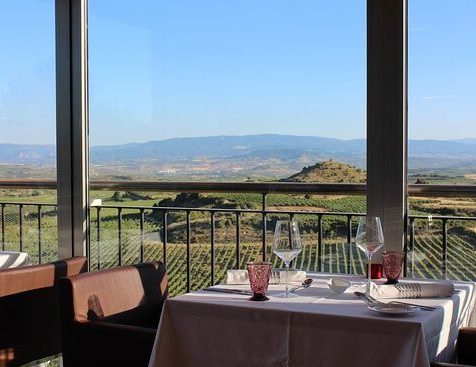
Eguren Ugarte offers complete wine experiences. Apart from the winery, a 3* hotel is a part of the concept. The hotel is built upon 2,000 m2 of tunnels excavated in rock, where the wines are stored. With views of the gorgeous vineyards, from your bedroom as well as the renowned restaurant located at the highest level of the hotel, it’s not a bad place to be.
Eguren Ugarte offers wine tasting courses and tours of the winery, which can be combined with food in their restaurant with stunning views. In 2019 they introduced Harvesting Experiences for the family, where you can participate, followed by a delicious lunch.
Learn more and book your experience
Campillo Winery: Experience The
Passion For Wine and Architecture
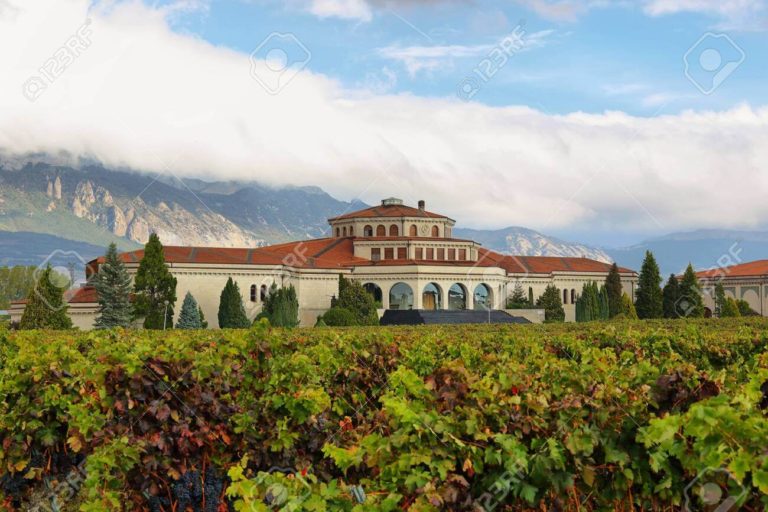
Photo: Campillo Winery
Arriving at Campillo is literally like entering a postcard. The sun is shining, the winery is just about to open, and there’s this magical tranquility surrounding us. Campillo is a part of the Faustino Group, with a tradition spanning over 150 years.
The dream of the founder, Julio Faustino Martínez, who’s a part of the third generation of the Faustino family, was just that. To combine his two passions; wine and architecture. The bodega is surrounded by 50 hectares of vineyards and sheltered by the Sierra Cantabria.
Jessica from the marketing department, explains how nothing at Campillo is a coincidence. As we enter, I learn how the 5 levels, into which the winery is divided, creates the optimal technical conditions for producing wine. A spiral staircase connects all levels. The building is made of natural stone. Its interior combines tradition with modern elegance and is full of beautiful art.
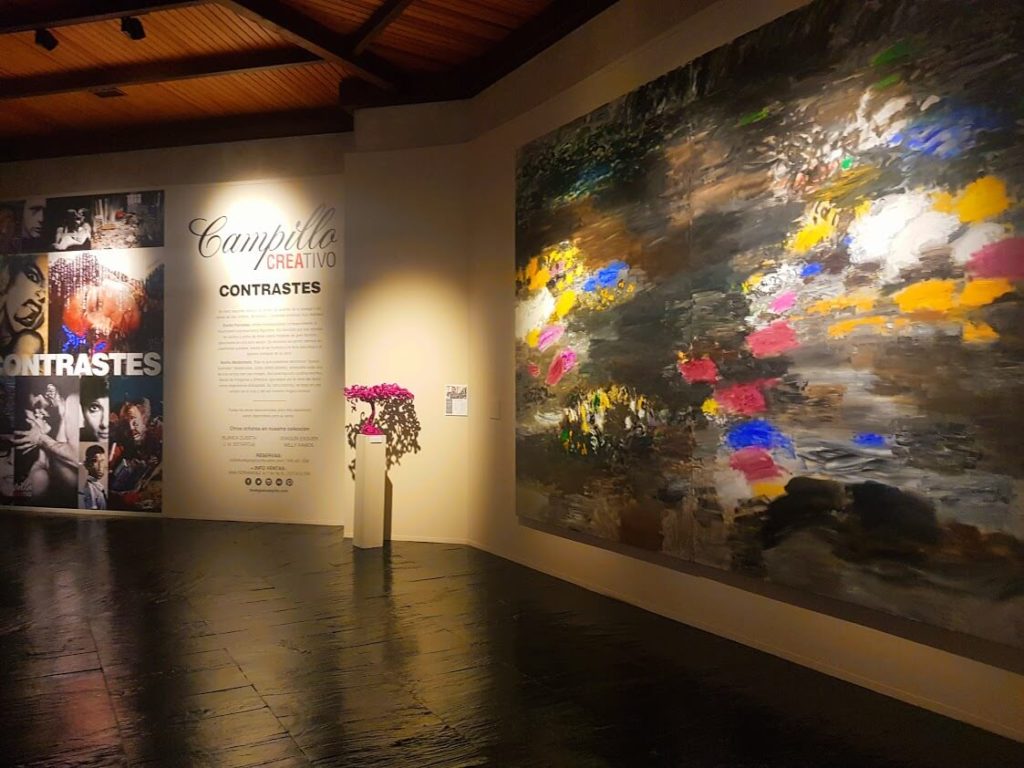
Campillo produces about 1 million liters of wine per year, out of which 75 % is red wine. If you buy enough, you could be eligible to their exclusive niches. The niches are like exclusive wine storage at the winery for VIP clients. Many have fallen in love with Campillo’s wines. Including the renowned Guggenheim museum, with about 1 million visitors annually, for which they produce a customized wine sold at the museum.
The wines of Campillo
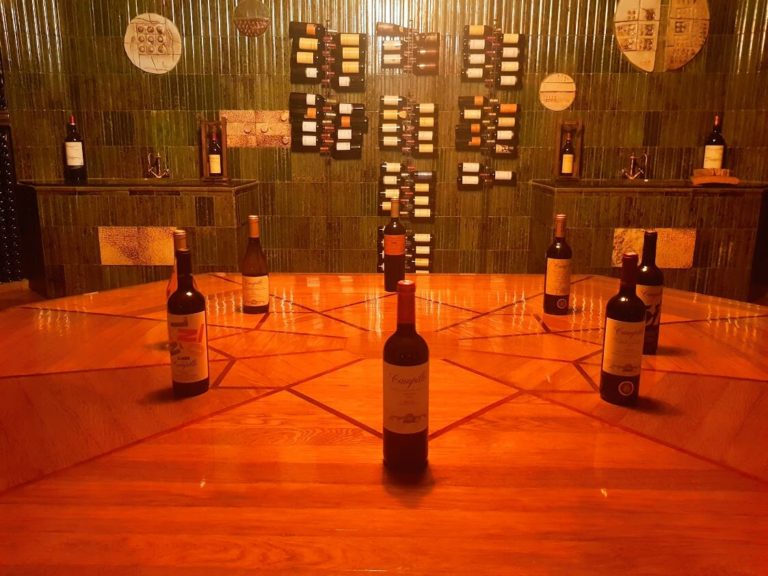
The Faustino group offers a wide range of reds, rosés, whites and champagnes. They also export to more than 70 countries. El Niño de Campillo is fresh. fruity, and elegant. Well-balanced, intense, and refreshing, with a delicate finish. The Reserva Collection is complex, well-structured, with a long finish. It would be great with meat. Fruity, with spicy notes. The 57 Gran Reserva is an even more intense sensation of chocolate and vanilla. With aromas of red fruits, pepper, and roasted from its aging in French oak.
Experience Campillo
Campillo offers daily visits where you not only will be able to enter their world of wine, but also explore some impressive artwork. Apart from guided tours, they also organize corporate events.
Learn more and book your experience
Bodega Ysios: Elegance In Focus,
With Attention-Grabbing Design
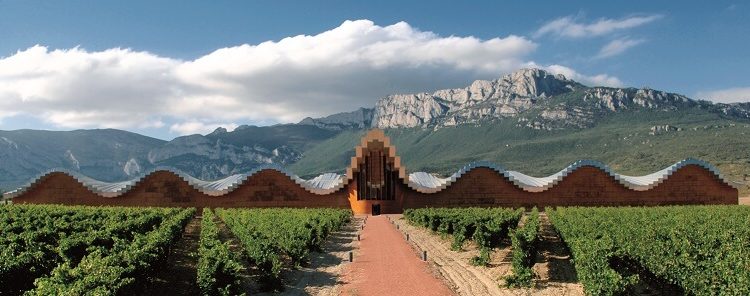
Photo: rutadelvinoderiojaalavesa.com.
Designed by the famous Spanish architect Santiago Calatrava, Ysios catches everyone’s attention. It has become a symbol of quality in La Rioja, a signature winery that surprises and fascinates. Silvia from their marketing departments tells me how people who drove by used to stop just to ask what it was when the winery first opened.
The main priority for their winemaker Roberto is high quality, exploring each variable in detail. Ysios carry out their harvesting manually, and only produces Reservas. With a total of about 50 hectares, between 40 to 120 years old, their production volume goes up to approximately 100,000 bottles per year. Los Prados is their wine field located on the highest altitude (600 m).
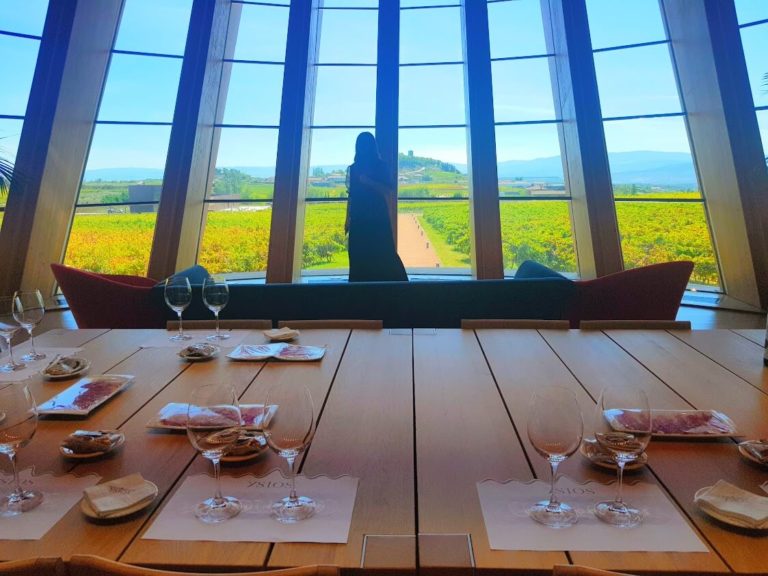
Some of Ysios’ wines are released in limited edition only. El Nogal, Ysios Edicion Limitada, is one example. It’s produced from grapes that come from their 80+ yeard old wine fields that survived the phylloxera. They also produce certain wines that never are released on the market for exclusive clients only. The Guggenheim Museum is one example.
Ysios launched their first white wine in the summer of 2019. Produced from viñas on a high-altitude, which isn’t very common in La Rioja. Ther wines are regularly recognized internationally through awards and by being featured in finer restaurants. Such as Mugaritz, internationally known as one of the best restaurants in the world.
The wines of Ysios
Los Prados, made from tempranillo on a 630 meters altitude, is fresh, with a good structure. Intense, with black fruit, plum, licorice, currant and chalk notes, fine spices and mineral notes. Ysios Reserva is elegant, with ripe black fruit, nuts, herbs, and sweet spices. Medium intensity, with fine tannin and a long finish.
Experience Ysios
Ysios offers both private and group tours with tastings, which also can be customized.
Learn more and book your experience
La Fabulista: Unique
Underground Winery Full of Stories
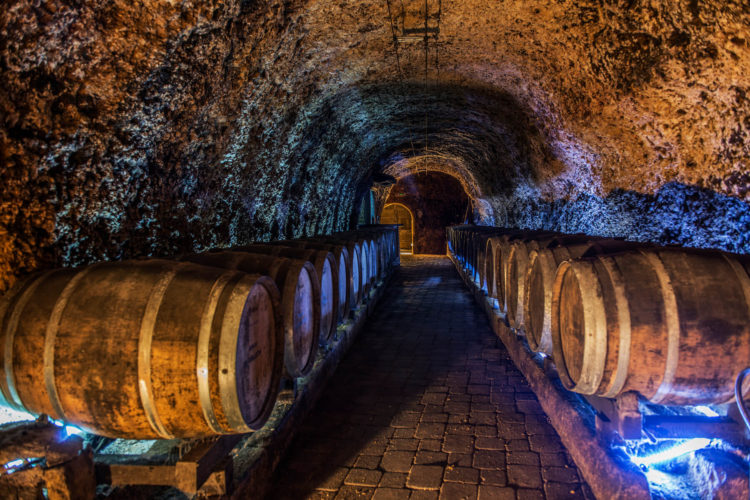
Photo: El Fabulista.
Of the more than 300 caves that exist within the walls of Laguardia, Bodega El Fabulista is one of the largest and most special of them all. Many wineries were located in the centre back in the days. When the area became more commercial, the majority moved to protect the streets of Laguardia from the heavy transport. Since Fabulista it’s located right by one of the entrances, it’s one of the few wineries that was able to stay.
At 7 meters deep, under the Palacio de los Samaniego, we enter the bodega. It’s divided into four tunnels, for the elaboration, aging and tasting. Raquel tells me how it all started with Samaniego. A wealthy writer, known for his fables and erotic tales of the 18th and 19th centuries.

An overview of the tunnels of Laguardia at the reception of El Fabulista.
La Fabulista use Carbonic maceration, a winemaking technique often associated with the French wine region of Beaujolais. Prior to the late 1700s, it was the most winemaking method in Rioja. The most notable effects are lower tannins, lighter color, more fruity aromas, and a softer texture to the wine. These wines are often refreshing and easy to drink.
La Fabulista collect about 50 000 kilos of grapes annually, out of which 90% are red. The rests from the grapes are used for spa products, and more.
The tour is interesting, and different from other wineries I visit. Raquel connects the history of the bodega, closely to the history of the area. It’s also focused on using all the senses to get the most out of a tasting experience. Being able to feel details, such as how different barrels affect the taste, and so on.
The wines of El Fabulista
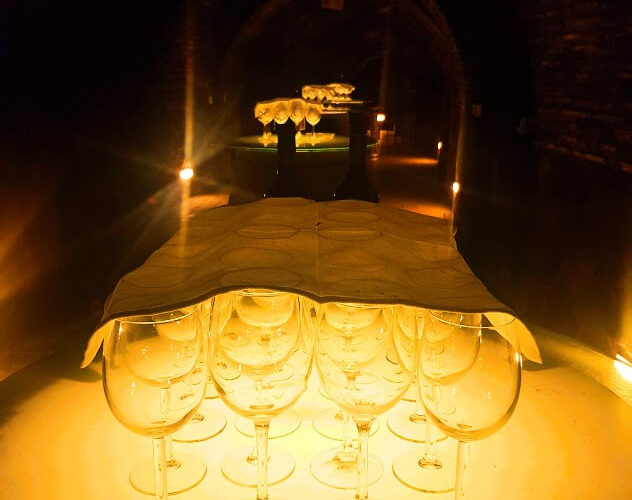
Each wine from El Fabulista represents a different story, a fable, which lets you travel back in time. Often related to Samaniego’s life. The Joven Tinto El Fabulista: La zorra y las uvas (Young Red Wine The Fabulist: The Fox and the Grapes) represents the carbonic maceration elaboration method well. Made out of Tempranillo, it’s fruity, refreshing, and easy to drink.
The Vino Tinto Ilustrado El Fabulista: La cierva y la viña (The Illustrated Red Wine: The Deer and the Vineyard), made of tempranillo, is gentle, round, and flavorful with a long aftertaste. Delicate, with notes of vanilla and red fruits.
Experience El Fabulista
In addition to their regular visits, El Fabulista offers theatrical visits. During these, Samaniego, the writer, as well as his wife if you’re lucky, will appear, as out of one of his fables. They interact with you, by telling their stories, and also lesser known erotic tales.
The theatrical visits take place on Saturdays. For groups and businesses, these kinds of special visits can be arranged. Visits to El Fabulista can also be complemented with a dinner or lunch with local products.
El Fabulista is a part of the same group as Villa Lucia, mentioned below under ‘Other wine experiences’. It’s possible to customize a complete wine experiences for you and your group, covering everything from history, culture, gastronomy, and of course lots of great wine.
Learn more and book your experience
Wineries in Elciego
Bodegas Valdelana: Innovative
And Personal Wine Experiences
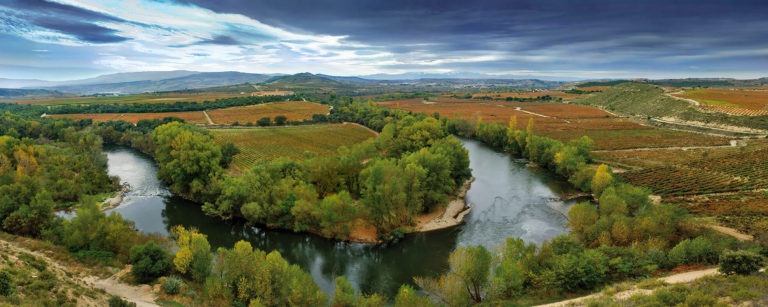
“The Garden of the Varieties”. Not a bad location for your private event, dinner, an astrology tour, or whatever really. Photo: Bodegas Valdelana.
In addition to producing great wines, Bodegas Valdelana has two Museums located in a 15th century underground cellar. Judit, the founder’s granddaughter, shows me their Ethnographic Museum, while she shares the story of the region and her family.
We continue to the wine museum, followed by unique attractions like a chapel and the “Tunnel of the senses”.
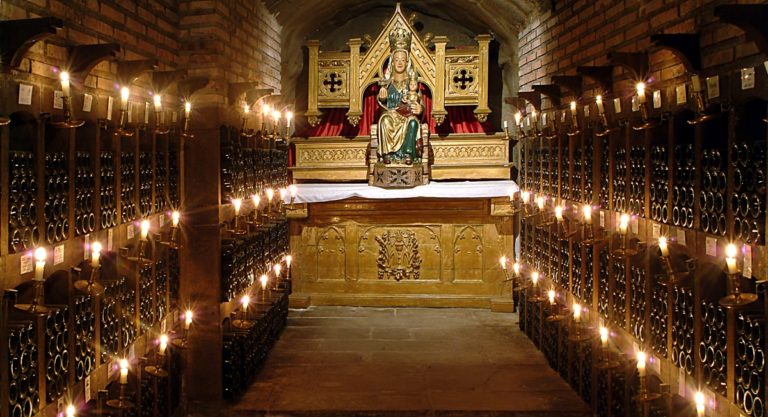
One of the highlights is the chapel of the Villa of 1583 and the underground vineyard.
Valdelana owns a total of 100+ hectares, which includes vineyards that are more than 100 years old. They carefully harvest the different grape varieties by hand. Judit’s brother is enolog, while she manages the marketing. They represent the 4th generation of the Valdelana family. Their dad Juan and grandpa are still very active in daily operations.
We visit “The Garden of the Varieties” (pictured above), their most stunning vineyard. Located a short drive away from the winery, it spoils you with amazing views of La Rioja and the Ebro River. It’s that kind of place where you feel like you could stay forever.
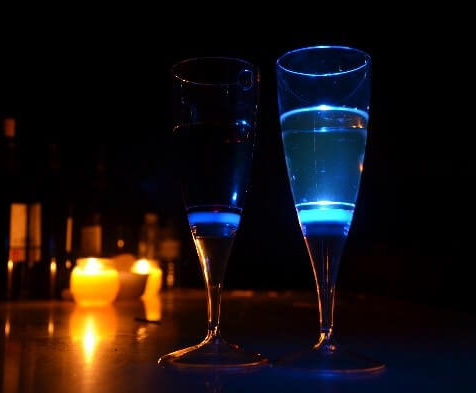
I’m also invited to their Stellar Marriage experience, named the Best of Wine Tourism in the Innovative Wine Tourism Experiences category.
Juan Valdelana guides us through the night through his two passions, wine and stars. We try their finest wines, matched with music and facinating stories about astrology signs. The combination of the dark, the glowing glasses, the wine, Juan’s energy, and the focus from the big group in the room creates such a unique ambience. Everyone is so present.
We’re inside due to the weather, and it’s still extraordinary. The Stellar Marriage experience normally takes place at The Garden of the Varieties, which has to be incredibly magical.
The wines of Valdelana
Valdelana sells its wines in more than 20 countries under four different brands: Familia Valdelana, Barón Ladrón de Guevara, AGNUS, Duquesa de la Victoria, and CENTUM VITIS.
The AGNVS Reserva is elegant, well-structured, with excellent tannin. Their CENTVM VITIS come from their wine fields that are more than 100 years old. As if that wasn’t exclusive enough, you drink it with gold sparkles, which is an experience in itself. Intense, with notes of red berries. Fresh, sweet, perfectly balanced, with an attractive finish that stays with you.
Apart from unique flavors, Valdelana distinguish themselves with their creative branding and ability to tell their story. Everything about their communication reflect their strong values, personality and passion so well. The Familia Valdelana wine is an example. It’s a tribute to previous generations and features etiquettes with the faces of the family members.
Experience Valdelana
Recently awarded its second Best of Wine Tourism in Art and Culture, Valdelana are specialists in unique wine experiences. Ranging from tours at the winery, to visits to their museums, gastronomy, corporate events, and the incredible Stellar Marriage experience. You can also stay at their charming rural accommodation
Learn more and book your experience
Diez Caballeros: Small
Passion-Driven Family Winery
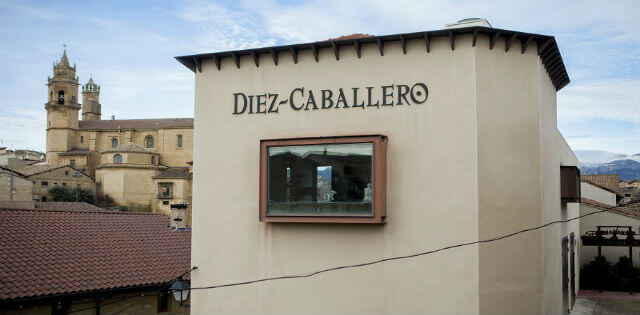
Photo: turismo.euskadi.eus.
Following the formula of the traditional Bordeaux Châteaux, which is relatively rare in Rioja, Diez Caballeros’ wines are made exclusively from grapes grown in their own vineyards under their control. While this requires a significant investment of time and money, it pays off through the end result – delicious wines with personality.
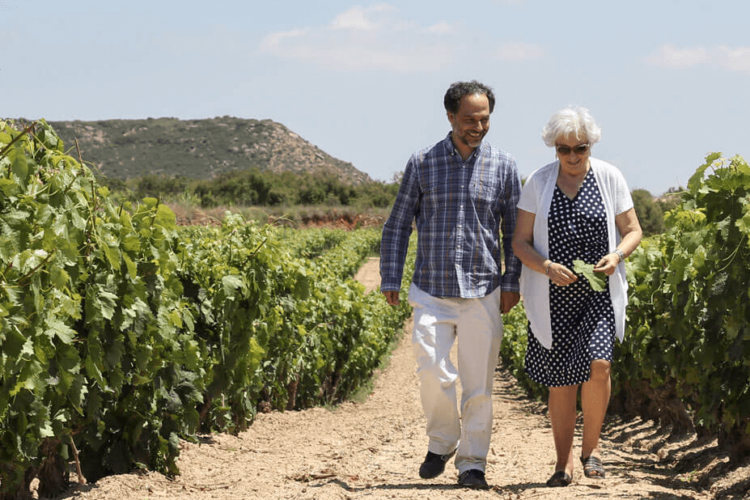
The owners, Victoria Cañas and her two children Antonio and Victoria Diez-Caballero, inherited the bodega from their grandparents.
Antonio manages the 25ha planted with tempranillo. This is a genuine family project, which charms me from the moment I arrive. I feel like I’m visiting a friend, it’s not commercial at all. It’s just very down to earth and passion-driven.
Antonio has just finished work for the day as he shows me around the winery. The focus is on quality, by selecting the finest grapes, respectful growing practices, concrete wine tanks, premium oak wine barrels, and strict processes. Their winemaker Manuel Ruiz Hernández is very well-known in the world of wine. He has published several books and writes regularly for magazines like La Rioja about the industry.
The wines of Diez Caballeros
Diez-Caballero Reserva is complex, expressive and well-balanced. It’s the perfect representation of the classic style of the Rioja Reserva. Elegant, powerful, and fresh with aromas of red fruit and toasted notes.
The Victoria is their most personal story. “Five women of the family named Victoria have provided a great personality to the Diez-Caballero family, expressed through this wine”. Complex, intense and spicy with aromas of ripe red fruit, with a lasting finish.
Experience Diez Caballeros
Diez Caballeros offers private and group tours with tastings, which can be customized.
Learn more and book your experience
Marques de Riscal: Where Modern
Luxury And Tradition Come Together
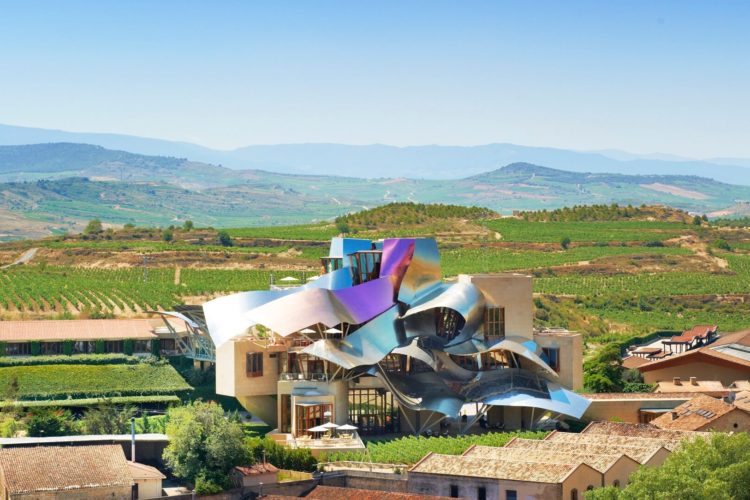
Photo: Marques de Riscal.
Unique and elegant, the history of Marques de Riscal goes well back in time. The City of Wine, marks a before and after, in the way of understanding the world of wine. It lets you cross a bridge between the 19th and 21st Century.
The area, measuring 100.000 m2, consists of the old winery of Marqués de Riscal dating back to 1858, one of the oldest in Rioja, and the exclusive Marqués de Riscal Hotel. The hotel lives in a new building designed by the Canadian architect, Frank O. Gehry, who also designed the Guggenheim in Bilbao. It has a luxury spa of 1.000 m2, two fine-dining restaurants, and a center for meetings, conferences and banquets.
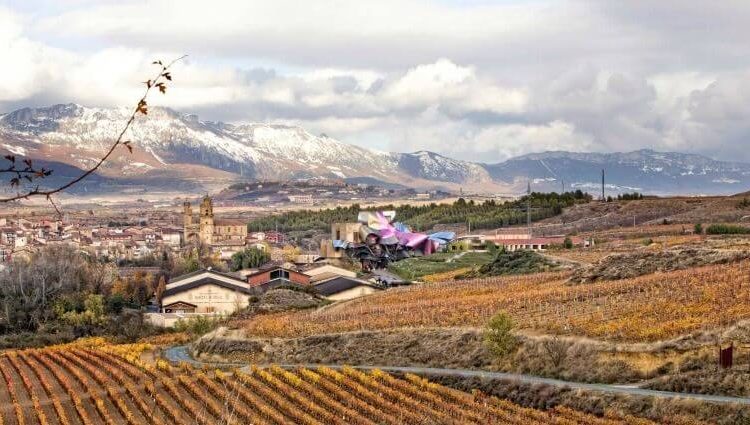
Photo: winerist.com.
Marques de Riscal is the realization of a dream by Don Camilo Hurtado de Amezaga. Driven by the devastation of the Bordeaux vineyards in the 19th century, he saw the potential in the area we now know as Rioja Alavesa. His small family introduced the winery in 1858 and launched their first vintage in 1862.
Today, Marques de Riscal owns 540 hectares of vineyards and controls another 900. They produce more than six million bottles a year, out of which over 60% is exported to more than 100 countries. It’s one of the easiest Spanish brands to find abroad.
The wines of Marqués de Riscal
Marqués de Riscal Reserva is their main wine. They produce 3 to 4.5 million bottles of this wine each year, depending on the vintage. That’s a lot of Reservas. Made out of Tempranillo, Garnacha and Mazuelo grapes, it’s a very traditional Rioja that despite its aging continues to be very fruity and fresh. Their award-winning rosé is well-balanced with strawberry and raspberry aromas. It stands out for its freshness, and acid sensations.
Experience Marqués de Riscal
Marqués de Riscal offers private and group tours with tastings, which can be customized.
Learn more and book your experience
Other Wine Experiences In La Rioja
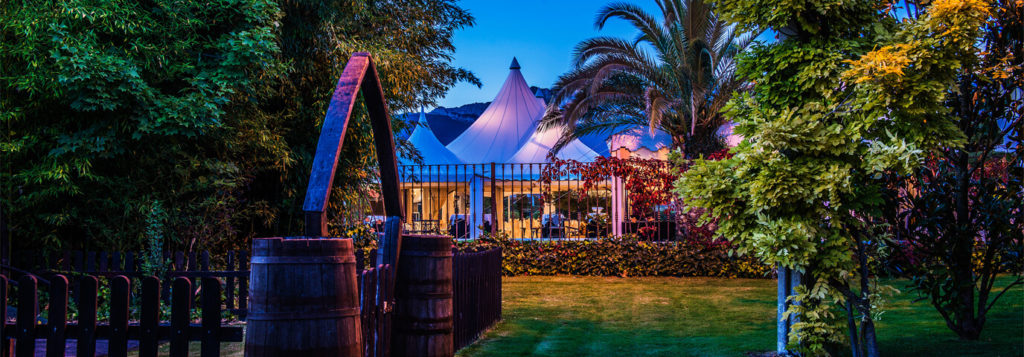
Villa-Lucía Espacio Gastronómico

While I could go on about how charming and unique the concept of Villa-Lucia is, the passion of the owners is what comes across strongest.
Villa-Lucía is best described as a cultural space designed to be enjoyed, savored, and experienced to promote the enogastronomic culture. It’s an old recreational estate of Samaniego (who also founded the winery El Fabulista mentioned above), of 10,000 m2.
Managed by Juan Manuel, it’s the only wine museum in the world that is completely adjusted for people with disabilities. Alessandro, who’s in charge of Marketing, explains how their mission is to be available for everyone. Promoting unique experiences connected to the region with important underlying messages, such as to remember to be present.
Surrounded by vineyards and centuries-old landscapes, with the latest technological equipment, and a team that really cares. Villa-Lucía is a unique place that lets you step into the world of wine with all your senses.
Learn more and book your experience
Wine Oil Spa Sercotel
Villa de Laguardia Hotel
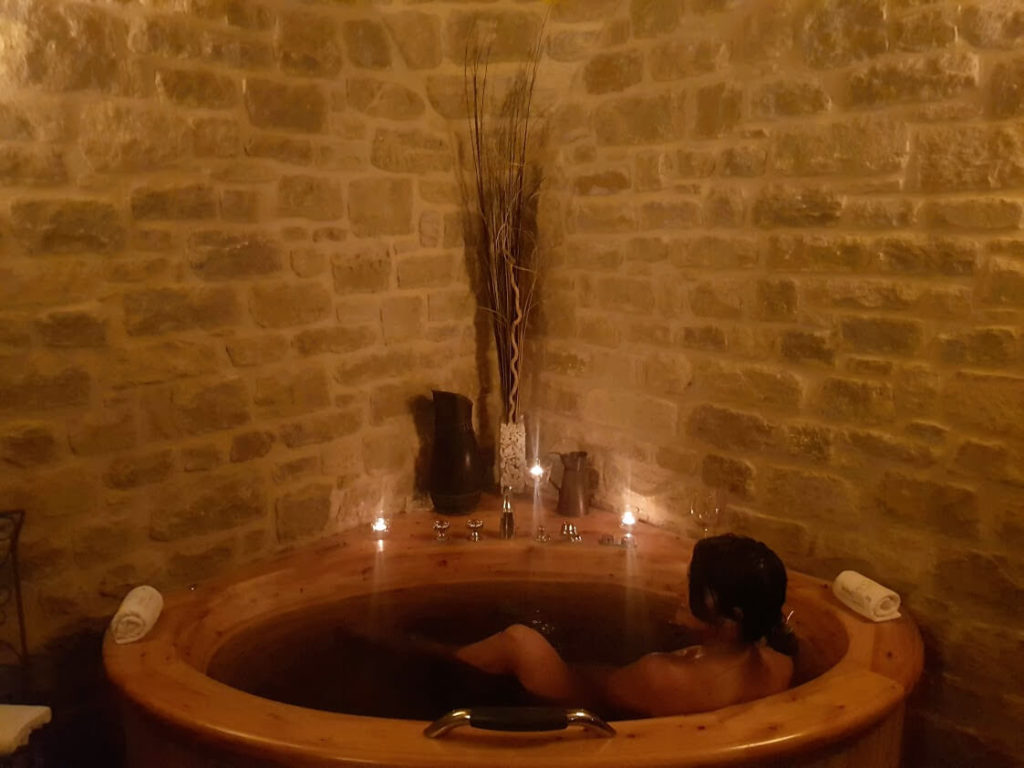
This 1000 square meter spa is located in the 4* Villa de Laguardia Hotel. Surrounded by wineries, yet only a 5 min walk to the Old Town.
The wine hydromassage bath, Baco, is one of the signature treatments. Named after the Wine God, it makes you feel a bit just like that.⚡
There is also grape massage (WOS therapy), relaxing pools with natural light, and many different wine and olive oil treatments using rest products from the area.
I loved checking wine bath of my bucket list. The bath usually takes about 25 minutes. You’re enjoying it with a glass of red, followed by a massage.
What could possibly be more relaxing?
Learn more and book your experience
The Future Of La Rioja
As Jose Luis Lapuente, Director, Consejo Regulador DOCa Rioja puts it; “Rioja is constantly improving, reviewing its definitions and strengthening what it currently offers with new geographical indications. The goal is to highlight the unique origin of the terroir, recognize its diversity, and to continue to establish quality requirements which assure the high standard of its wines.”
The new system encourages the move away from oak-aging as the primary quality sign, towards fine regional microclimates and singular vineyard sites to enchant the world.
While the opinions about this vary, the shift is exciting. We can expect quality in new ways, in an industry which has looked the same for years.
Now, add innovative gastronomy, vistas that are so pretty that it’s unreal, and warm hospitality from locals who love what they do.
Are you ready to experience it?
Would you like to receive future blog updates? Sign up using the small form.


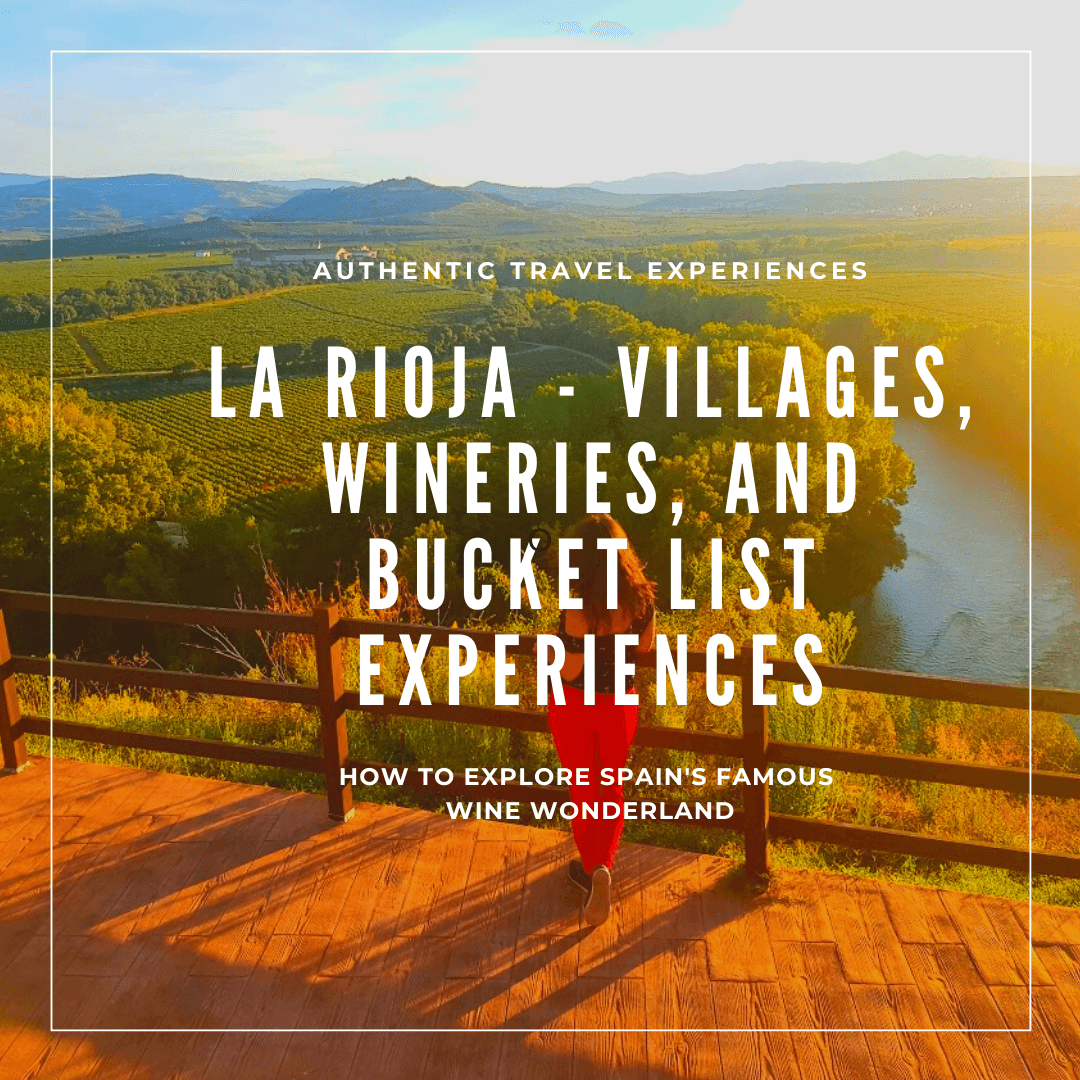
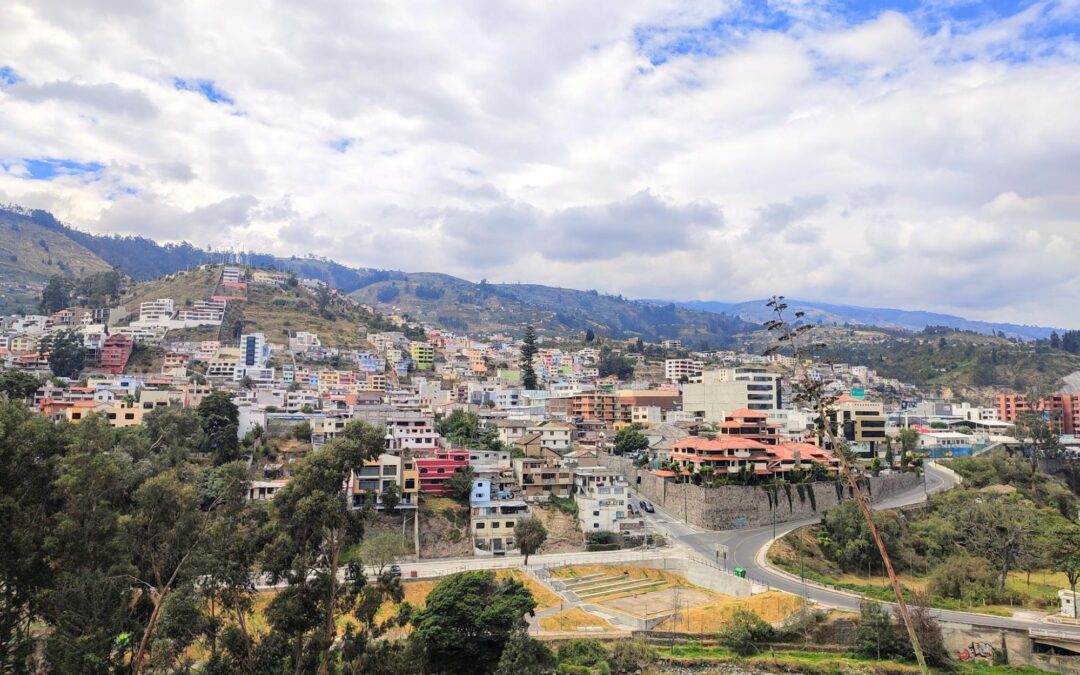

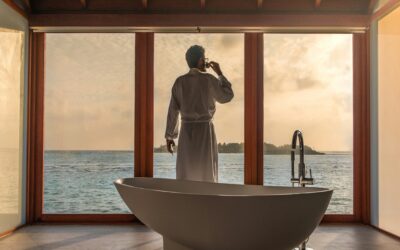
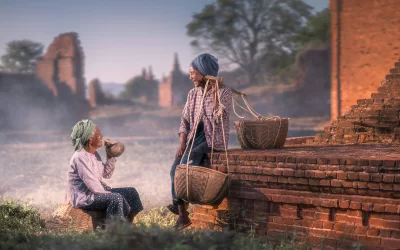
0 Comments